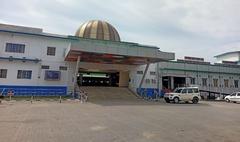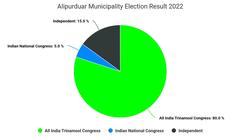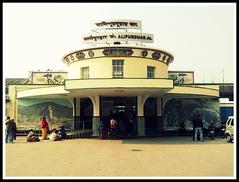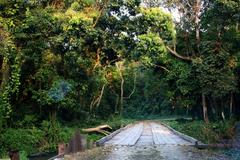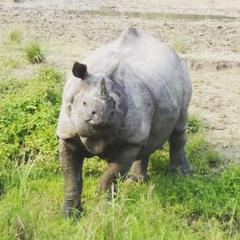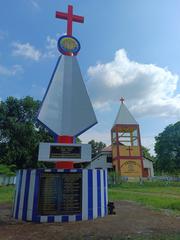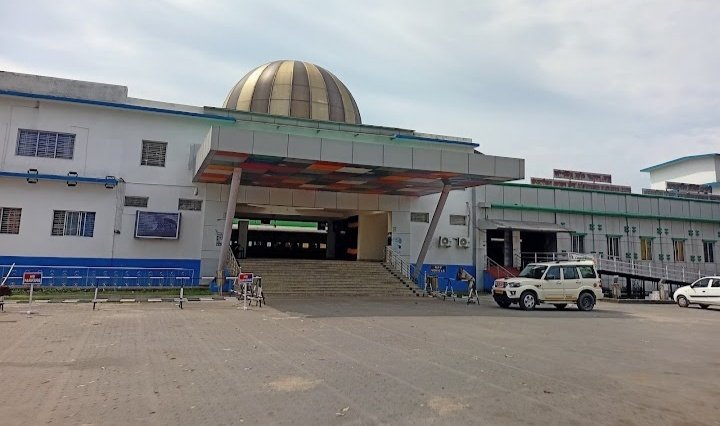
Comprehensive Guide to Visiting Alipurduar, Alipurduar, India
Date: 18/08/2024
Introduction
Nestled in the picturesque Dooars region of West Bengal, India, Alipurduar is a treasure trove of history, culture, and natural beauty. Known for its lush tea gardens, dense forests, and vibrant local culture, Alipurduar offers a unique blend of attractions that cater to a wide range of interests—from history buffs and nature enthusiasts to adventure seekers. Historically, Alipurduar was a significant trading center, forming part of the ancient Silk Route that facilitated trade between Bhutan, Tibet, and the Indian subcontinent. The strategic importance of Alipurduar has been further highlighted during the British colonial era and continues to be an important urban center post-independence. This guide aims to provide a comprehensive overview of Alipurduar, covering its rich historical background, cultural heritage, and practical travel information like visiting hours, ticket prices, and travel tips. Whether you’re planning to visit or just exploring your travel options, Alipurduar is a destination worth adding to your list (West Bengal Guide, Alipurduar History, North Bengal Tourism, Travopo).
Table of Contents
- Introduction
- Early Trading Hub and the Silk Route
- The Name and Its Origin
- Strategic Importance
- Colonial Era and Military Significance
- Post-Independence Development
- Cultural and Architectural Heritage
- Modern-Day Alipurduar
- Connectivity and Accessibility
- Natural Beauty and Biodiversity
- Practical Information for Visitors
- Conclusion
- FAQ
Early Trading Hub and the Silk Route
Alipurduar, located in the Dooars region of West Bengal, India, has a rich history as a significant trading center. Historically, it was part of the ancient Silk Route, which facilitated trade between Bhutan, Tibet, and the Indian subcontinent. The remains of this traditional route are still visible in Santarabari, a quaint village nestled between Rajabhatkhawa and Buxa Fort. This route was instrumental in the exchange of goods, culture, and ideas, making Alipurduar a melting pot of diverse influences.
The Name and Its Origin
The name “Alipurduar” is derived from three parts: “Ali,” “Pur,” and “Duar.” The first part, “Ali,” is named after Col Hedayat Ali Khan, who lived in the area and fought a war against Bhutan. The second part, “Pur,” means residence, and the third part, “Duar,” originates from the name of the region, “Dooars,” which means doors in Assamese and Bengali, signifying the gateway to Bhutan and the northeastern states of India.
Strategic Importance
Alipurduar’s strategic location near the Bhutan and Assam borders has historically made it a crucial point for military and trade activities. During British colonial rule, it served as a significant railway junction, connecting Kolkata in the south with New Delhi and Guwahati in the north and east, respectively. This connectivity facilitated the movement of goods and people, further enhancing its importance as a trading hub.
Colonial Era and Military Significance
During the British colonial period, Alipurduar gained prominence due to its strategic location and military significance. The British established a military base here to safeguard their interests in the region and to monitor the borders with Bhutan and Tibet. The presence of Col Hedayat Ali Khan and his military engagements with Bhutan highlight the area’s historical military importance.
Post-Independence Development
After India’s independence in 1947, Alipurduar continued to develop as a significant urban center. The establishment of the Alipurduar Railway Division in 1958 further boosted its connectivity and economic growth. The city became a crucial link in the Indian Railways network, connecting the northeastern states with the rest of India.
Cultural and Architectural Heritage
Alipurduar’s rich cultural heritage is evident in its architecture and local traditions. The city is home to several historical landmarks, including the Buxa Fort, which dates back to the British era. The fort served as a detention camp for Indian freedom fighters during the struggle for independence. Today, it stands as a testament to the region’s historical significance and resilience.
Modern-Day Alipurduar
In contemporary times, Alipurduar has evolved into a bustling urban center while retaining its historical charm. The city serves as a gateway to several picturesque destinations in the Dooars region, including the Buxa Tiger Reserve, Coochbehar, and Phuentsholing in Bhutan. The Buxa Tiger Reserve, located just 18 km from Alipurduar, is home to the second-largest population of Royal Bengal Tigers in West Bengal.
Connectivity and Accessibility
Alipurduar’s strategic location and excellent connectivity make it an ideal base for travelers exploring the northeastern states of India and Bhutan. The city is well-connected by road and rail, with regular train services to major cities like Kolkata, New Delhi, and Guwahati. The nearest airport is Bagdogra, located approximately 140 km away, providing air connectivity to major Indian cities.
Natural Beauty and Biodiversity
Surrounded by thick deciduous forests, lush tea gardens, and semi-tropical forests, Alipurduar offers a visual treat for nature lovers. The enchanting view of the emerald blue River Teesta meandering through the lofty mountainous valley is a sight to behold. The region is also home to several wildlife sanctuaries and national parks, including the Jaldapara National Park, which houses the largest number of Indian one-horned rhinoceros.
Practical Information for Visitors
- Visiting Hours: Most historical sites and parks in Alipurduar are open from 9:00 AM to 5:00 PM. It is advisable to check specific timings for each attraction.
- Tickets: Entry fees vary depending on the site. For example, the Buxa Fort and Tiger Reserve have nominal entry fees. Always check the official websites or local information centers for the latest ticket prices.
- Best Time to Visit: The best time to explore Alipurduar is between October and March when the weather is pleasant.
- Travel Tips: Wear comfortable clothing and shoes, carry water, and be prepared for moderate hiking if you plan to visit natural reserves and parks.
- Nearby Attractions: Don’t miss the Coochbehar Palace, Rajabhatkhawa, and Phuentsholing in Bhutan.
Conclusion
Alipurduar’s rich history, strategic importance, and natural beauty make it a fascinating destination for travelers. From its early days as a trading hub on the Silk Route to its modern-day significance as a gateway to the northeastern states and Bhutan, Alipurduar offers a unique blend of historical, cultural, and natural attractions. Whether you’re planning to visit or just exploring your travel options, Alipurduar is a destination worth adding to your list. For more travel tips and updates, download the Audiala mobile app and follow us on social media (West Bengal Guide, Alipurduar History, North Bengal Tourism, Travopo).
FAQ
- Q: What are the visiting hours for Buxa Fort?
- A: Buxa Fort is open from 9:00 AM to 5:00 PM daily.
- Q: How do I get tickets for the Buxa Tiger Reserve?
- A: Tickets can be purchased at the entrance or online through the official website.
- Q: What is the best time to visit Alipurduar?
- A: The best time to visit is between October and March.
- Q: Are there guided tours available in Alipurduar?
- A: Yes, guided tours are available for most historical and natural sites. Check with local tour operators for more details.
References
- West Bengal Guide, 2024, http://www.westbengalguide.com/alipurduar/
- Alipurduar History, 2024, https://alipurduar.gov.in/history/
- North Bengal Tourism, 2024, https://northbengaltourism.com/alipurduar/
- Travopo, 2024, https://travopo.com/travel-guides/india/alipurduar/
- Alipurduar.gov.in, 2024, https://alipurduar.gov.in/tourist-places/
